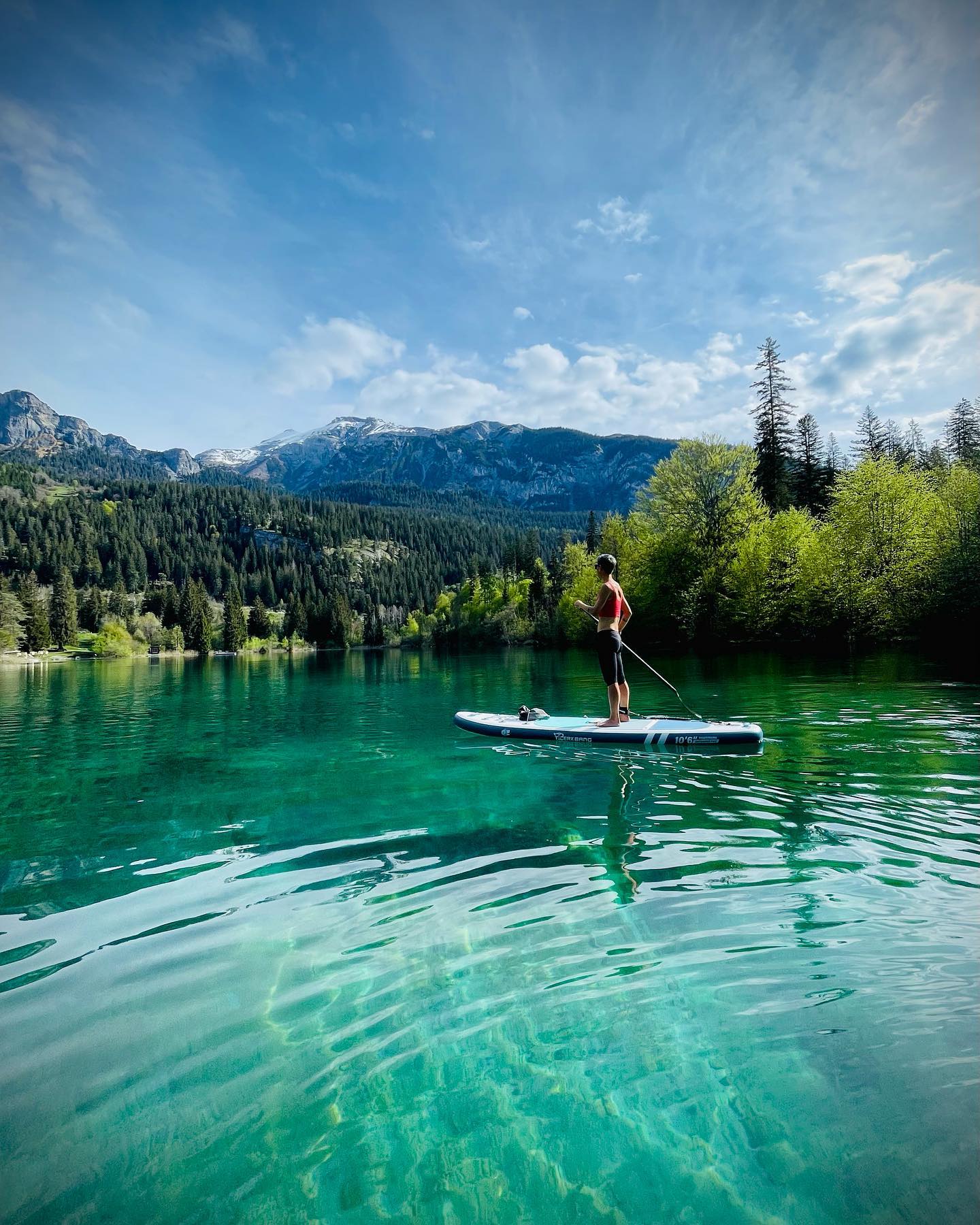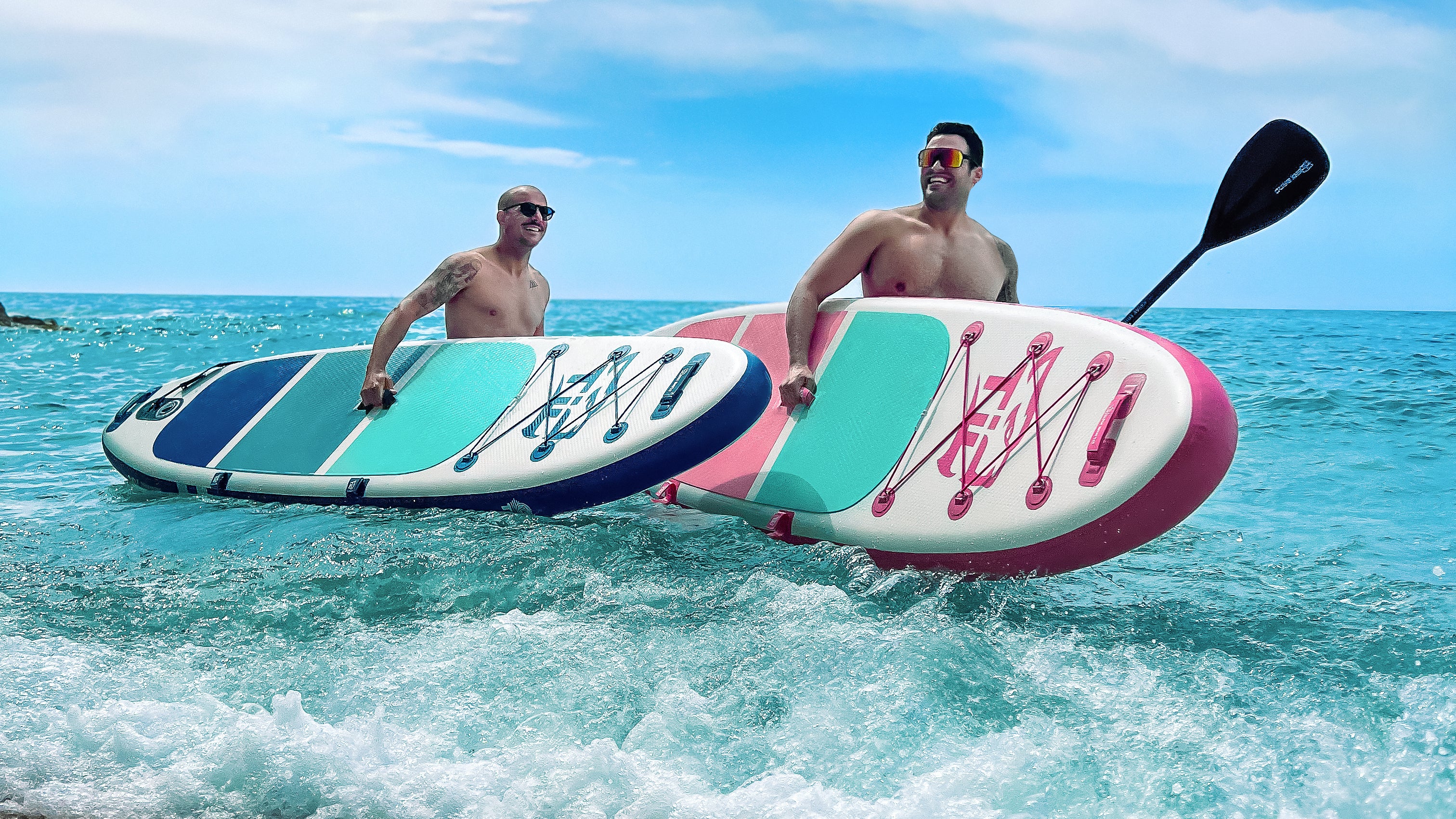Artículo: 10 Essential SUP Techniques for Beginners

10 Essential SUP Techniques for Beginners
What's up with paddleboarding?
Paddleboarding, also known as stand-up paddleboarding or SUP, is a rad sport that originated in Hawaii, USA. It all started when surf instructors decided to stand on surfboards and use a paddle to glide through the water, eventually turning it into a dedicated sport.
What's the deal with SUP paddleboarding?SUP stands for Stand Up Paddle, and it's all about riding the waves and cruising on water using a paddleboard. The paddleboard provides a wide and thick surface that offers enhanced buoyancy and easier balance. Plus, you get to wield a paddle to propel yourself across various water surfaces. Compared to the more challenging traditional surfing, SUP paddleboarding is a breeze, easy to learn, versatile, and attracts a wide range of enthusiasts.
Who can get into paddleboarding?
Paddleboarding is not only incredibly fun but also beginner-friendly. Once you've got the hang of paddling, you can quickly get started. It appeals to a diverse range of people, from kids (recommended for ages 10 and above) to middle-aged and older individuals (around 65 years), as long as they are physically fit and enjoy outdoor activities.
Types of paddleboards
Paddleboards come in different types based on their dimensions:
- Shortboards (below 9'2.8 meters): Ideal for surfing. Shorter boards offer better maneuverability. Generally, surfboards for kids are below 2.4 meters.
- Medium-sized boards (9'-12'2.8 meters-3.7 meters): Great for multi-purpose use. You can use them for leisurely paddling on lakes or for simple surfing in the ocean.
- Wide boards (around 31"80cm or wider): Wide boards provide better stability and are easier to stand on. However, they may be slower than narrower boards.
- Longboards (12.6-14'3.8 meters-4.3 meters): Suitable for racing and long-distance paddling adventures. Longboards offer higher speeds and better straight-line gliding. If you're interested in competitions or long-distance trips, you'll need a longboard for racing or covering extended distances.
- Narrow boards (29"-30"74cm-76cm): Narrow boards offer higher speeds compared to longboards but may be less stable.
Getting started with paddleboarding... All you need to know!
Paddleboarding beginners' guide:
1. Boarding:
- Push the paddleboard into shallow water and stand beside it, ensuring the fin doesn't hit the sand. This is a common mistake for newcomers.
- Step one foot onto the board, adopting a kneeling position to lower your center of gravity for better stability.
- Once on your knees, adjust your position as needed until you feel the board is stable enough.
2. Standing:
- Slowly transition from the kneeling position by placing one foot on the board, followed by the other foot, shoulder-width apart.
- Keep your knees slightly bent to maintain balance.
- Stand tall with a straight back and gaze forward.
- Keep your feet slightly apart to increase stability.
3. Paddling:
- Grip the paddle with your hands on the upper part, palms facing down, and extend both arms.
- Engage your core and upper body strength to insert the paddle into the water and use your arms to pull it backward.
- When the paddle reaches behind you, lift it up using your arms and bring it back to the front.
- Maintain a moderate rhythm and power while paddling to ensure a smooth glide.
4. Turning and maneuvering:
- To turn, you can paddle deeper on one side of the board to change direction.
- For sharper turns, you can combine deeper paddling with body rotation.
5. Maintaining balance:
- Balancing your body is crucial. Always keep your body upright with a straight back.
- Keep your feet slightly apart to increase stability.
- When encountering waves or currents, adjust your body's center of gravity flexibly to maintain balance.
These are the basic beginner techniques. As you practice and gain more experience, you can gradually master advanced moves and tricks like turning, surfing, and even jumping. Remember to prioritize safety, always be aware of water conditions and your own abilities, and choose suitable water areas and weather conditions for paddleboarding.





